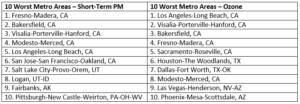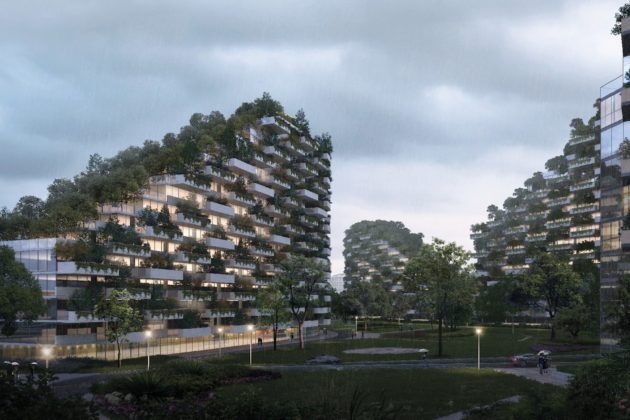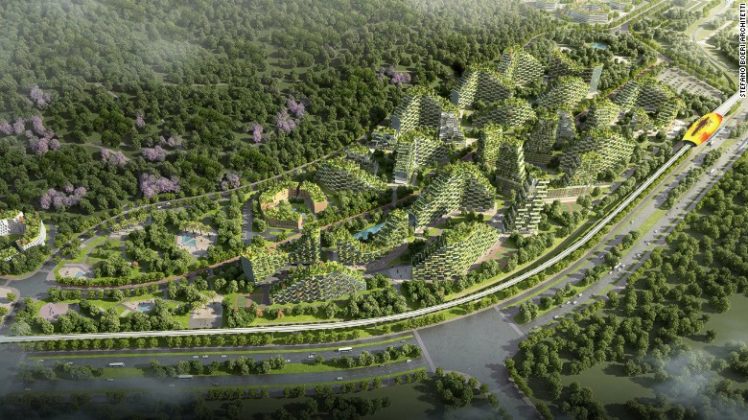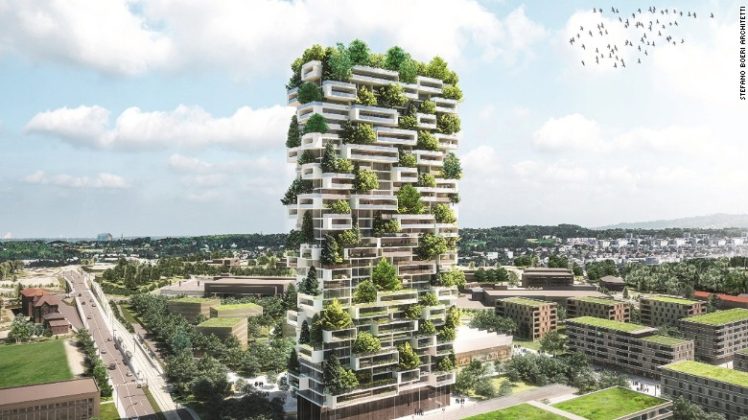
It’s no secret that air quality in denser, urban landscapes (cities) isn’t nearly as good as it is in rural areas: Congestion, traffic, emissions from countless factories, facilities, all contribute to poor air quality.
But our unique metropolis is home to much greenspace integrated into the landscape. And Minneapolis is constantly praised for its park system. Surely the air quality here must be better than it is in other cities?
Well.
Other cities, yes.
The West Coast seems to have a stranglehold on both PM (particulate matter, which is a mix of acids, chemicals, metals, soil, and dust created when the emissions from cars, factories, power plants, etc. react with the air) and ozone (which is created much the same way; more on that in a moment).

But we’re not necessarily good. Twin Cities air pollution is still linked to over 2,000 deaths a year, and sends another 1,000 to the hospital with asthma and other respiratory-related illnesses (according to a collaborative study released by the Minnesota Health Department and the Minnesota Pollution Control Agency in 2015).
Ozone is the cause that typically lingers in experts’ lungs.
Ground level ozone (ozone with averse affects for humans; “bad” ozone; smog) is created when emissions from industrial factories, electric utilities, car exhaust and gasoline vapor, et al. are introduced to sunlight.
So, pretty much all the time, always, every day.
It is especially dangerous for children and the elderly, and anyone already susceptible to lung disease and symptoms of asthma. And it’s not just humans subjected to the harmful effects of ozone: sensitive vegetation, including edible plants, and ecosystems also react negatively to bad air.
Who would have thought?
/sarcasm.
(For more information, visit www.epa.gov)
While all areas of Minnesota currently meet the EPA’s ozone standard of 70 parts per billion (ppb), the levels on illness and number of deaths in Minneapolis remain. President Obama tried to lower permissible levels of ozone to 65 ppb in 2015, but it didn’t go through.
And, of course, the closer to the inner city you get, the worse the air gets; North Minneapolis and East Side St. Paul have been particularly susceptible.
Meanwhile, in China…
What is clear is that innovation is key.
China’s reputation for poor air quality is currently being combated by what will ultimately be an expansive forest city. It sounds like Lord of the Rings. It’s not. It’s a collection of clean oxygen-producing vertical structures covered in greenery based in Southern China.
When complete, Liuzhou Forest City (as it will be called), will cover 342 acres with more than 70 buildings, and a potential population of 30,000 people. Houses, schools, hospitals, offices, and lodging are all part of the plan, and will all be literally green: Up to 40,000 trees and a million plants will cover the structures.
It will look something like this:
These plants will absorb 10,000 tons of carbon dioxide and 57 tons of pollutants a year while producing 900 tons of fresh oxygen. Roofs will be fitted with solar panels to collect energy and power the buildings, and geothermal energy will provide air-conditioning. And, to top it off, the buildings will provide new habitats for displaced wildlife; repairing ecosystems previously damaged by ozone, etc.
What’s important to note is,
- China is investing millions into creating cleaner, breathable air.
- We’re not.
Now, yes, China’s air pollution is much, much worse than it is in the United States. The Forbes infographic below should give you some idea of the disparity:

But that doesn’t mean we’re in the clear. And we’ll be even less so as regulations put in place by the EPA face forthcoming rollbacks.
The Clean Air Act, enacted way back in 1963, is still the gold standard in protecting air quality. But H.R. 806, a bill introduced by republicans in February of 2017, is designed to bypass/completely do away with many of these regulations.
Under H.R. 806, the right to safer air quality, and the right to know whether or not the air is safe to breathe, would be delayed for 10 years. A decade. The lifespan of the Irish Wolfhound. And any corporation applying for an air pollution permit would be allowed to ignore any new ground-level ozone health standards during these crucial ten years.
Read the text of the bill here: H.R. 806, the “Ozone Standards Implementation Act of 2017”.
Most of Minnesota’s regulations on air quality follow/defer to the Clean Air Act and other EPA regulations. There were seven “bad air” days, i.e. days when the ozone levels are so high it is recommended that people, especially the youngest and the oldest of us, stay indoors, in 2016.
With Clean Air Act regulations no longer in effect, the number of people affected negatively (fatally) by poor air quality would ostensibly continue to rise.




















